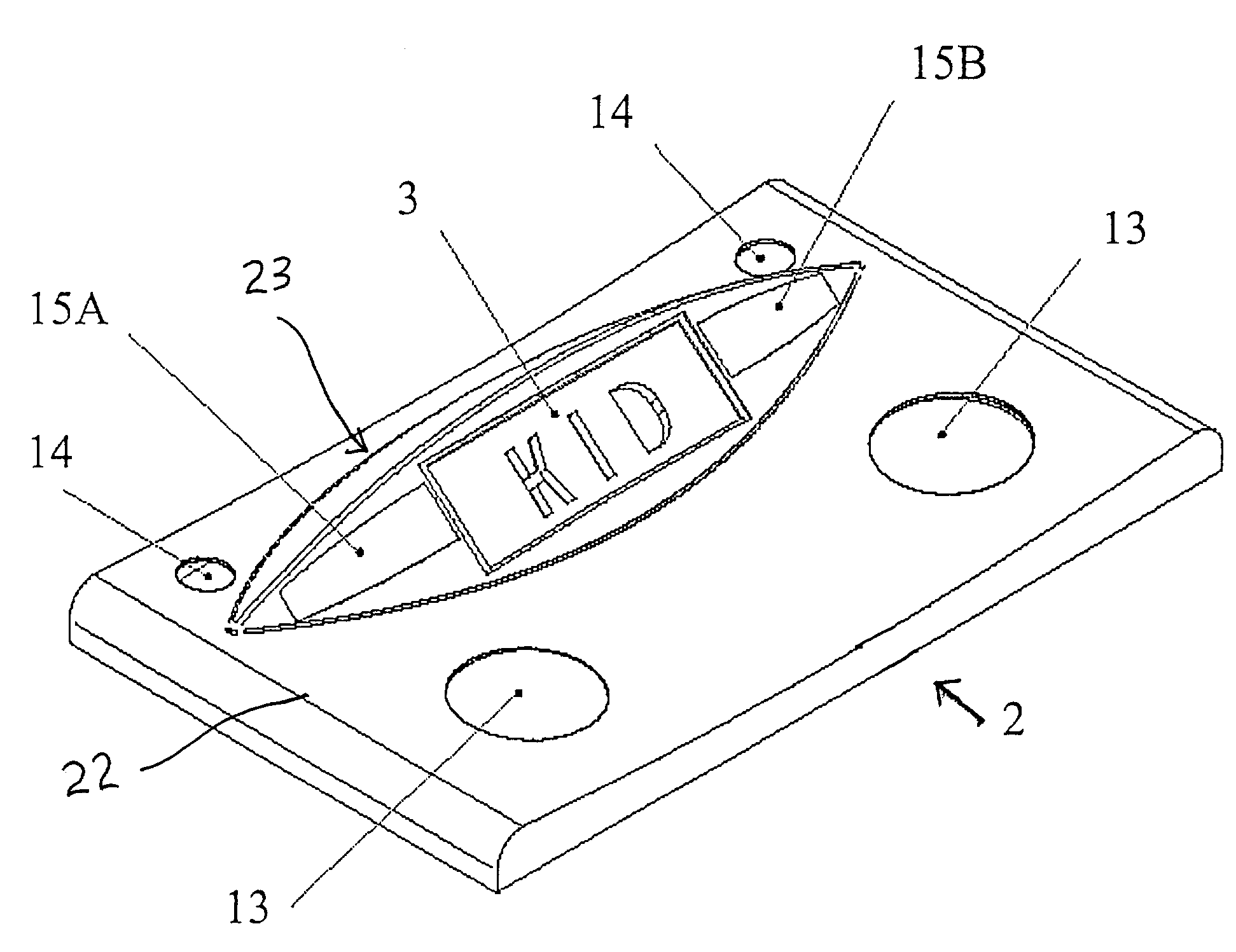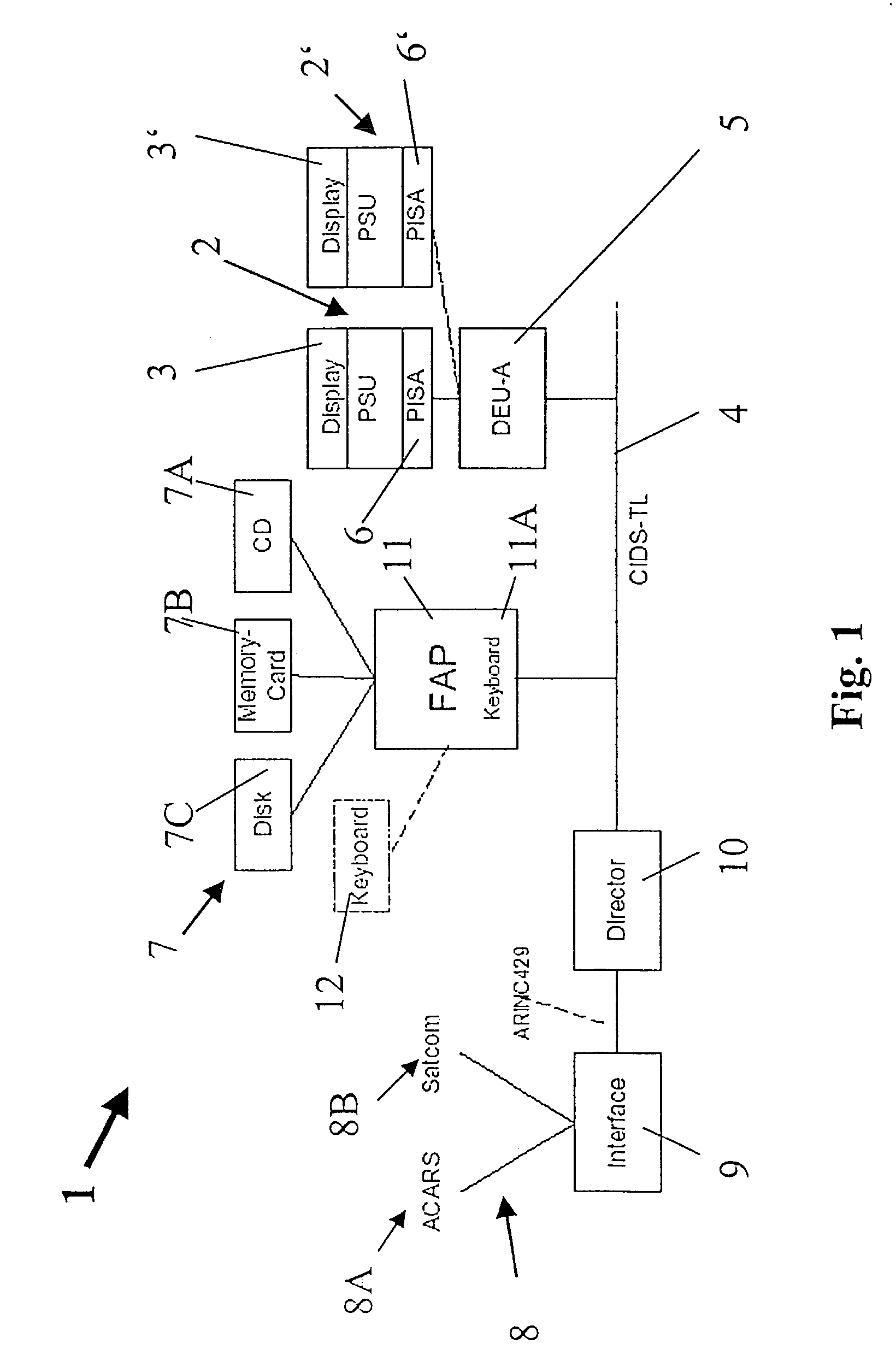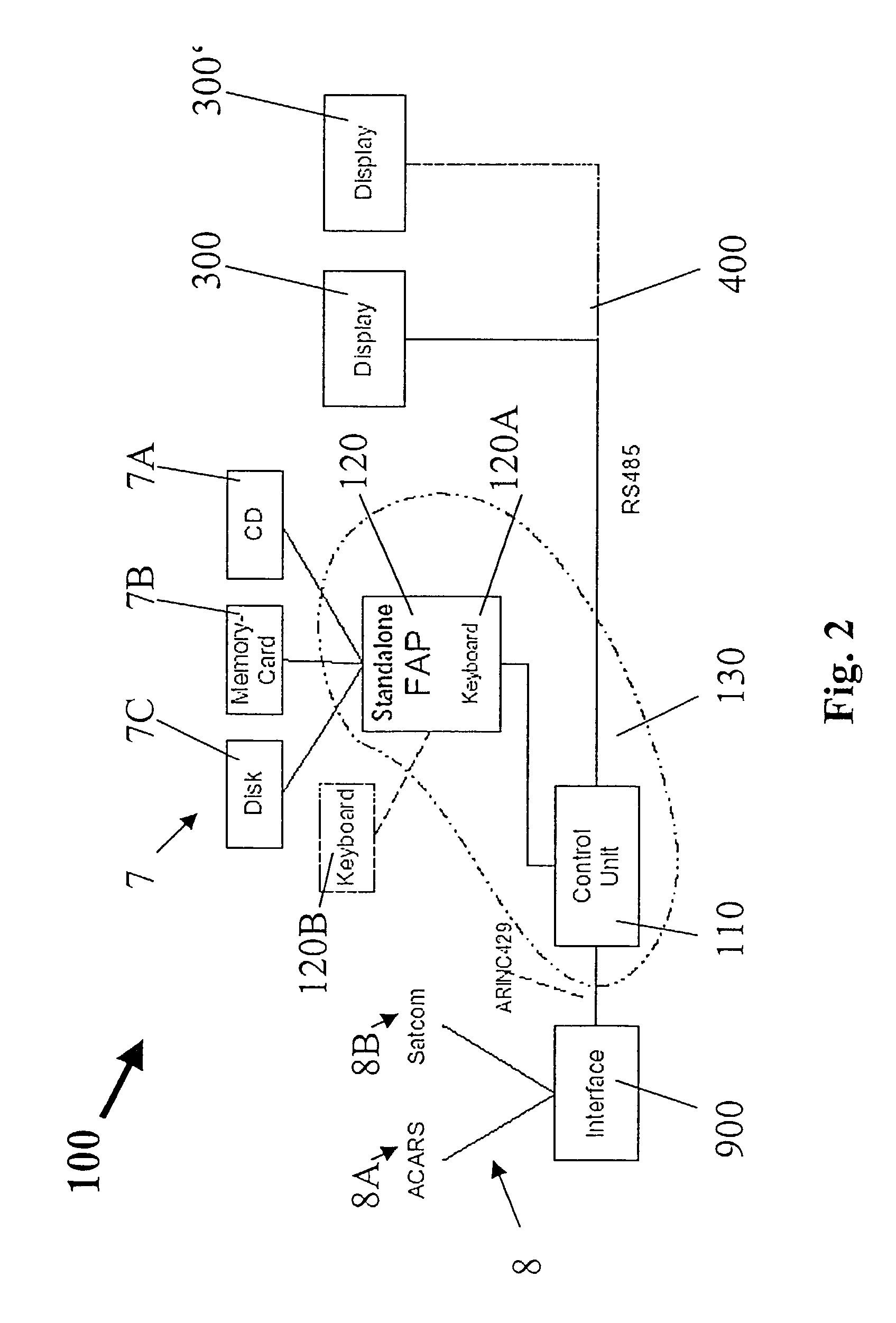Information and notification system using passenger service units in an aircraft
a technology of information and notification system and passenger aircraft, which is applied in the direction of process and machine control, instruments, and navigation instruments, etc., can solve the problems of constant weight penalty in the loading of aircraft, invariable and changeable instruction content of the signs, and the available display area of the psu can only be used for selectively displaying the two fixed displays, etc., to achieve the reduction of total components, weight and investment, and the effect of reducing costs, weight and space consumption
- Summary
- Abstract
- Description
- Claims
- Application Information
AI Technical Summary
Benefits of technology
Problems solved by technology
Method used
Image
Examples
first embodiment
[0026]FIG. 1 schematically illustrates the general structure of the information and notification system 1 according to the invention, whereby this system 1 is integrated into a system that is already present in the aircraft for carrying out passenger related and / or flight attendant related functions, particularly a so-called cabin intercommunication data system (CIDS). Such a system is, for example, generally known from the German Patent Publication DE 34 26 893, and provides certain passenger related functions in the passenger cabin of an aircraft, among other things.
[0027]In the passenger cabin, service units 2 or 2′, so-called passenger service units (PSUs), are arranged typically above the passenger seats. These PSUs provide certain service and information functions for the passenger or passengers seated below the respective PSU. Among other things, reading lamps 13, flight attendant call buttons 14, instructional signs 15A, 15B and loudspeakers are provided in the PSU 2, 2′, fo...
second embodiment
[0034]The system 100 according to FIG. 2 is for transmitting data in situations in which it is not possible to use an existing or previously installed data transmission system, such as the so-called CIDS system, in the aircraft, for example in aircraft not equipped with such a CIDS system. Thus, the information and notification system 100 of the present second embodiment includes its own databus system 400, which may be a wire-bound system, for example based on the RS485 standard, or may be a wireless system embodied in any known wireless technology, for example as a wireless LAN, a Bluetooth wireless transmission link, or an infrared wireless transmission link. Thus, while the notification displays 300, 300′ are spatially or physically respectively arranged or integrated in the respective passenger service units 2, 2′ (see FIG. 3), the information transmission to the notification displays 300, 300′ can be carried out independently of the other functions of the service units.
[0035]T...
PUM
 Login to View More
Login to View More Abstract
Description
Claims
Application Information
 Login to View More
Login to View More - R&D
- Intellectual Property
- Life Sciences
- Materials
- Tech Scout
- Unparalleled Data Quality
- Higher Quality Content
- 60% Fewer Hallucinations
Browse by: Latest US Patents, China's latest patents, Technical Efficacy Thesaurus, Application Domain, Technology Topic, Popular Technical Reports.
© 2025 PatSnap. All rights reserved.Legal|Privacy policy|Modern Slavery Act Transparency Statement|Sitemap|About US| Contact US: help@patsnap.com



